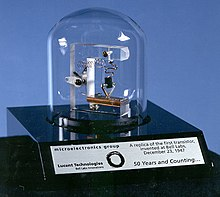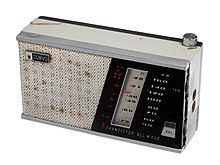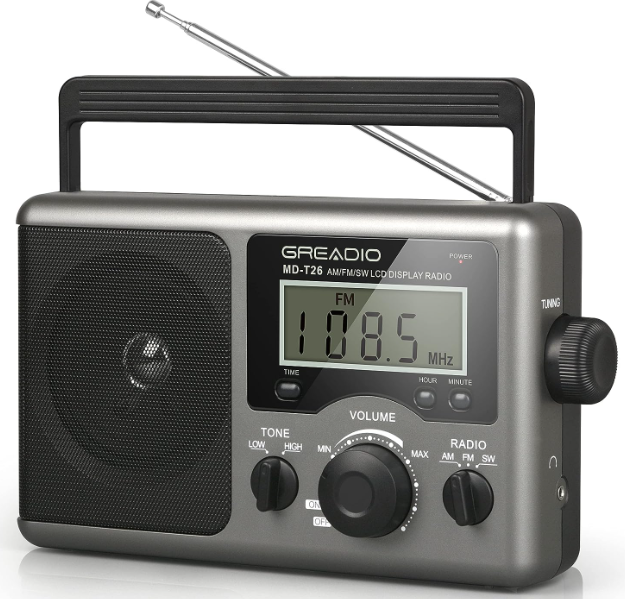Exploring the Nostalgia: What is a Transistor Radio? In a world dominated by sleek smartphones, cutting-edge smart speakers, and high-tech gadgets, there exists a technological relic that carries with it a sense of nostalgia and a glimpse into a simpler past—the transistor radio.
Discovering the Transistor Radio: A Journey Through Time
The transistor radio, often affectionately referred to as simply “a transistor,” was a groundbreaking electronic device that captured the hearts of millions during the mid-20th century.
It was a portable radio that utilized transistors to amplify and tune radio signals, replacing the bulky vacuum tubes that had previously powered radios.
The Transistor Revolution: A Exploration of Miniaturization and Mobility
In the wake of World War II, the world stood on the precipice of a technological revolution that would transform the landscape of electronics, communication, and daily life.
At the heart of this transformation was the invention of the transistor, a breakthrough that would redefine how we think about electronics, ushering in an era of miniaturization and mobility.
The Vacuum Tube Era and its Limitations
Prior to the transistor’s arrival, electronics were reliant on vacuum tubes for amplification and signal processing. While vacuum tubes were effective at their job, they came with a host of limitations that hindered the development of portable and efficient devices.
Vacuum tubes were large, power-hungry, and fragile. They generated a significant amount of heat, required substantial power supplies, and were prone to failure.
These limitations were most evident in the realm of radio technology. Radios of the era were often sizable pieces of furniture, with arrays of vacuum tubes hidden within their wooden casings.
The energy consumption and heat generated by vacuum tubes restricted the portability of radios, relegating them to stationary use within the home.
Birth of the Transistor: A Paradigm Shift
In 1947, at Bell Laboratories, scientists John Bardeen, Walter Brattain, and William Shockley unveiled the transistor.

This tiny, solid-state device represented a monumental departure from vacuum tubes. Constructed from semiconducting materials, the transistor had no moving parts, consumed drastically less power, and generated minimal heat.
The transistor operated by controlling the flow of electrical current between different layers of semiconductors. Its ability to amplify and switch electronic signals made it a versatile replacement for vacuum tubes in various applications, from radios to televisions and eventually computers. Its most revolutionary aspect was its size: transistors were tiny enough to be easily integrated into circuits and, crucially, mass-produced on silicon wafers.
Miniaturization Unleashed: Integrated Circuits and Beyond
The breakthrough of the transistor was just the beginning. The concept of miniaturization, introduced by the transistor, laid the foundation for the development of integrated circuits (ICs).
Jack Kilby and Robert Noyce are credited with independently creating the first integrated circuits in the late 1950s. These ICs allowed multiple transistors and other components to be etched onto a single chip, dramatically reducing the size of electronic devices.
ICs revolutionized industries ranging from telecommunications to computing. They enabled the creation of smaller, more powerful computers and eventually paved the way for microprocessors—the “brains” of modern computers.
This trend of miniaturization and increasing efficiency led to the birth of consumer electronics that could fit in the palm of your hand.
Mobility Unleashed: The Transistor Radio
One of the most iconic products of the transistor revolution was the transistor radio. Released in the 1950s, these pocket-sized devices were a testament to the marriage of miniaturization and mobility.

Transistor radios were incredibly energy-efficient, making them ideal for battery-powered operation. This newfound portability meant that people could carry their radios with them wherever they went, transforming leisure activities like picnics and beach outings into opportunities to enjoy music and stay informed.
The transistor radio became a cultural phenomenon. It allowed listeners to tune in to music, news, and entertainment on the move, effectively democratizing access to information and media.
This cultural shift influenced the way people consumed content and shaped the emergence of youth culture and music fandom.

The transistor revolution was more than a technological advance; it was a paradigm shift that changed the way we interact with technology and the world around us.
The principles of miniaturization and mobility set in motion by the transistor continue to drive innovation across industries.
From the devices we carry in our pockets to the powerful computers that drive modern society, the transistor’s legacy lives on as a testament to the potential of small-scale innovation.
The revolution sparked by the transistor reminds us that the most significant breakthroughs often come in the smallest packages.
It teaches us that innovation is not just about pushing the boundaries of what’s possible but about reshaping our relationship with technology itself.
Features and Impact: A Portable Portal to the World
Transistor radios boasted a sleek and often colorful design, making them highly attractive and a fashion statement of their time.
They were powered by batteries, making them perfect companions for picnics, road trips, and outdoor adventures.

Their portability enabled people to carry music, news, and entertainment wherever they went, and their affordability made them accessible to a wide range of consumers.
One of the most significant impacts of the transistor radio was its role in connecting people to the world. The ability to tune in to stations from distant places introduced listeners to a wide range of music genres, news updates, and cultural trends.
It played a crucial role in shaping pop culture, enabling listeners to discover new artists, hear live broadcasts, and develop a sense of community around shared radio experiences.
The Nostalgia Factor: Crackle, Tune, and Connection
The charm of the transistor radio lies not just in its functionality but in the entire experience it offers.
The act of tuning in to a station with the analog dial, often accompanied by a satisfying click, and the familiar crackling sounds that emerged from the tiny speaker are etched in the memories of those who grew up with this device.
It symbolizes a time when gathering around the radio was a social event, families huddled together to listen to the latest news, music, or radio dramas.
Todays befit that we get form revolution of transistor
1. Portable Electronics: The most immediate benefit of the transistor revolution is the wide array of portable electronic devices we use daily. From smartphones and laptops to tablets and wearables, these devices are compact, energy-efficient, and powerful. The miniaturization of components enabled by transistors has made it possible to carry computing power and connectivity wherever we go.
2. Communication: Transistor-based technologies have revolutionized communication. Mobile phones, which rely heavily on transistors, have become an integral part of modern life, connecting people across the globe instantly. The miniaturization of communication devices has also led to innovations like satellite communication, GPS systems, and wireless networking, all of which contribute to our interconnected world.
3. Healthcare: Transistor-based advancements have had a significant impact on healthcare. Devices like pacemakers, insulin pumps, and medical imaging equipment rely on transistors to function accurately and reliably. The miniaturization of medical devices has allowed for non-invasive treatments and improved patient comfort.
4. Entertainment: The transistor revolution transformed the way we access and enjoy entertainment. From streaming music and videos on our smartphones to gaming on handheld consoles, transistors have enabled immersive and portable entertainment experiences.
5. Energy Efficiency: Transistors are at the heart of energy-efficient technologies. From smart thermostats and LED lighting to electric vehicles, transistors play a role in optimizing energy consumption and reducing our carbon footprint.
6. Internet of Things (IoT): The concept of the IoT, where everyday objects are connected to the internet, is made possible by the miniaturization of components. Transistors are integral to the sensors and processors that enable these objects to collect and exchange data, leading to innovations in home automation, smart cities, and industrial applications.
7. Computing Power: Transistors are the building blocks of microprocessors, which are the engines driving modern computers. The ability to pack more transistors onto a single chip has led to exponential growth in computing power, enabling tasks that were once thought impossible, such as artificial intelligence, complex simulations, and data analysis.
8. Renewable Energy: Transistors are crucial components in renewable energy technologies, such as solar panels and wind turbines. They help manage energy conversion and distribution, making sustainable energy sources more efficient and accessible.
9. Research and Innovation: The miniaturization of transistors has enabled scientists and researchers to create powerful tools for studying the fundamental aspects of nature. Microscopes, particle accelerators, and sophisticated laboratory equipment all rely on transistor-based technologies.
10. Economic Growth: The widespread adoption of transistor-based technologies has spurred economic growth and job creation. Industries like electronics manufacturing, software development, telecommunications, and more have flourished due to the advancements made possible by transistors
Celebrating a Timeless Icon
While modern technology has propelled us into an era of advanced audio quality, seamless connectivity, and limitless content options, the transistor radio’s legacy endures.
It serves as a reminder of a time when technology was simpler yet powerful enough to spark revolutions in how we consumed media.
The transistor radio is a cherished relic, a bridge to the past that reminds us of the magic of discovery, the joy of tuning in, and the human connection it facilitated.
So, the next time you stumble upon a dusty transistor radio in an antique store or come across one in a movie, take a moment to appreciate the role it played in shaping our media landscape and cultural history.
The transistor radio may have faded from the forefront of technology, but its impact and nostalgic allure continue to resonate with generations young and old.
Who invented transistor radio?
The transistor radio was not invented by a single individual but rather emerged as a result of the collective efforts of several researchers and engineers.
The development of the transistor radio was a natural progression of the invention of the transistor itself.
The transistor, which was invented at Bell Laboratories by John Bardeen, Walter Brattain, and William Shockley in 1947, marked a significant breakthrough in electronics.
Transistors replaced the bulky and power-hungry vacuum tubes that had been used for amplification in electronics. This technological advancement paved the way for the creation of smaller and more portable devices, including radios.
The first commercial transistor radio was introduced by the Regency Division of the Radio Corporation of America (RCA) in 1954. It was called the “Regency TR-1” and was a joint effort involving several engineers, including William Shockley (one of the co-inventors of the transistor), Jack Murdock, and others.
The Regency TR-1 was a small and portable radio that used four transistors and was powered by a 22.5-volt battery.
While it was not as small or efficient as modern portable radios, the TR-1 marked the beginning of the transistor radio era, showcasing the potential of the transistor for portable electronics.
In the years that followed, various companies and engineers continued to refine and improve transistor radio technology.
The compact size, lower power consumption, and portability of transistor radios played a significant role in shaping the way people listened to music and consumed information, paving the way for the development of more advanced portable electronic devices in the future.
